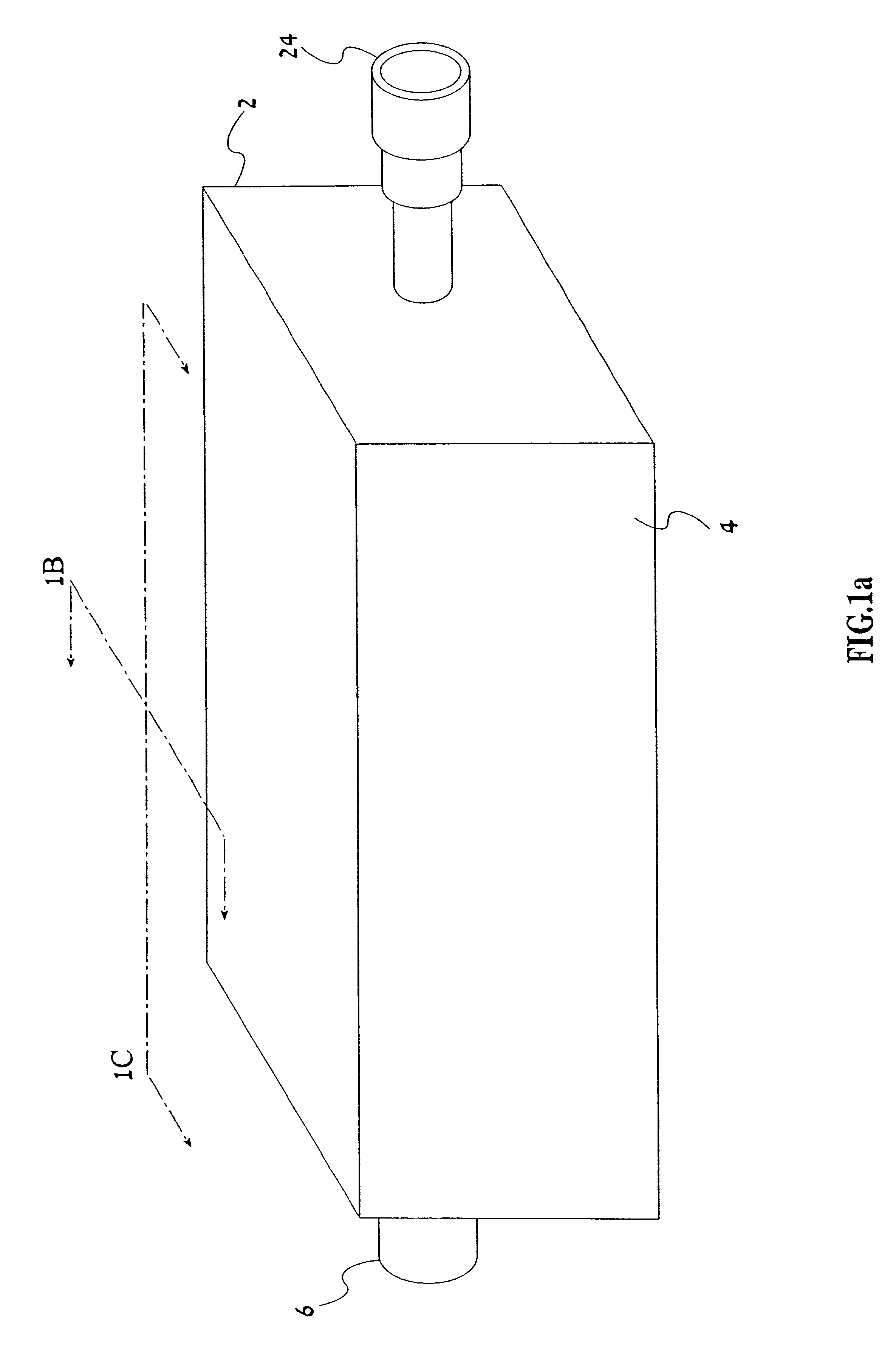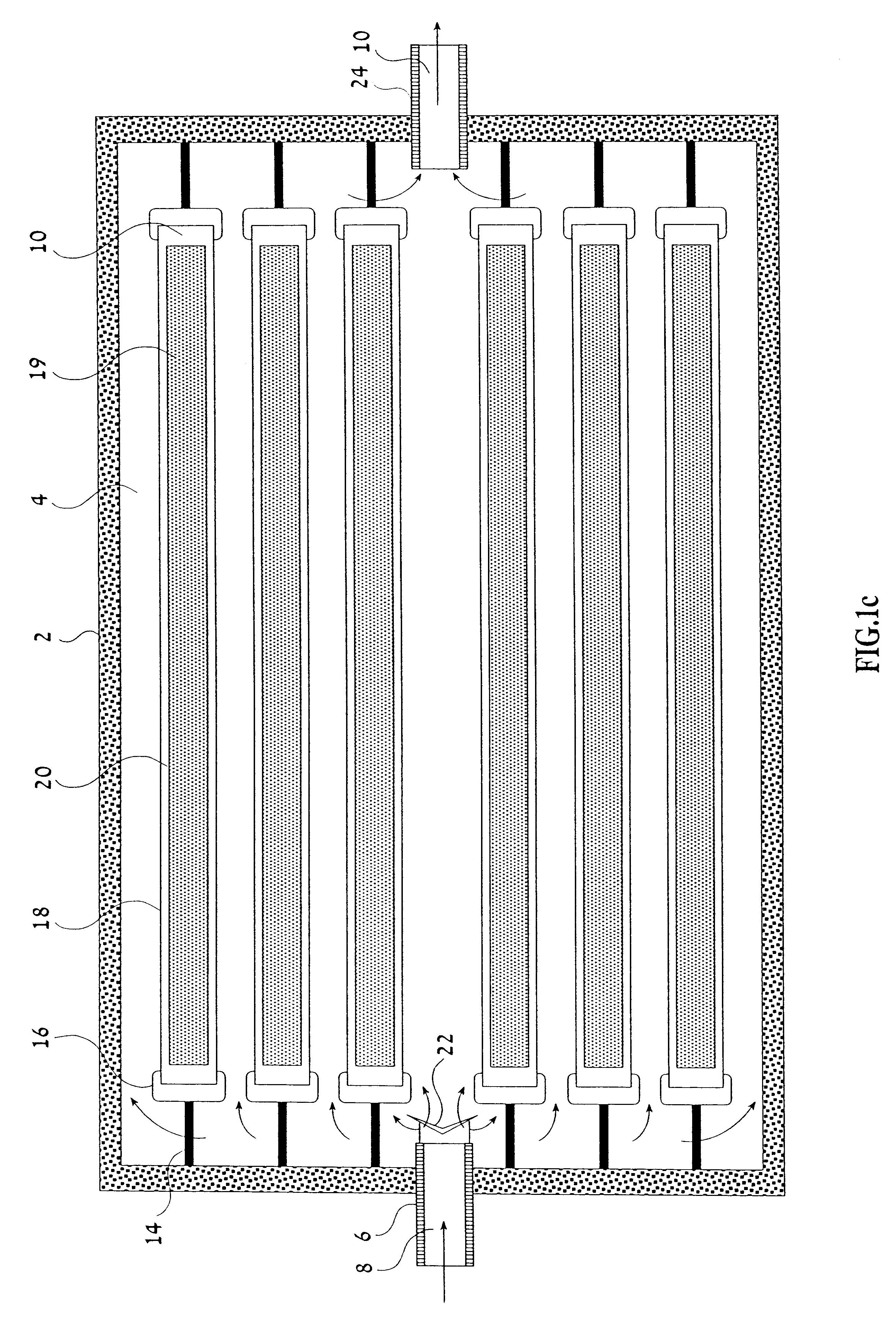Device and method for performing a biological modification of a fluid
a technology of biological modification and fluid, applied in the direction of dialysis system, other medical devices, drug compositions, etc., can solve the problems of high mortality risk of patients with high risk of liver or kidney failure replacement, and extremely complex liver function, etc., to achieve the effect of reducing immortalized cells cannot be expected to rein in all the normal physiological characteristics of primary, and the risk of liver or kidney failur
- Summary
- Abstract
- Description
- Claims
- Application Information
AI Technical Summary
Benefits of technology
Problems solved by technology
Method used
Image
Examples
example 1
Preparation of Liver Micro-organ Cultures
Mouse micro-organ cultures from liver were prepared as follows. Organs were removed and with scalpels, were cut to an appropriate width of 2 mm, length of 3 mm, and sliced using a tissue chopper or other suitable cutting means into sections of 300 micrometers thick. These micro-organs were placed in a 24-well microplate in 400 ml of Dullbeco's Minimal Essential Medium (DMEM) in the absence of fetal calf serum (FCS) under 5% CO.sub.2 at 37.degree. C., under constant shaking at 12 rpm for periods of one to eight days. Twenty micro-explants were grown per well.
example 2
Measurement of Cell Proliferation in Liver Micro-organ Cultures
Micro-organ cultures from several mouse organs were dissected and cultured in a humidified incubator at 37.degree. C. in the absence of serum using micro-organ cell culture technique, as described in example 1. To assess cell division, incorporation of tritiated thymidine was measured using standard protocols (Kobayashi, et al. (1994, J Biomater Sci Polym Ed 6(4):325-42). These results show that DNA synthesis occurs during the culture period (FIG. 5). In addition, mouse liver micro-organ cultures were grown as described in example 1 for 14 days and pulsed for 4 hours with bromodeoxyuridine, fixed, and stained with a fluorescent antibody to bromodeoxyuridine to label mitotic nuclei (Sigma Chemical). Nuclei that are actively synthesizing DNA were observed in these cultures (data not shown). This result demonstrates prolonged viability of the MCs in vitro and their capacity to proliferate ex vivo.
example 3
Albumin is Produced By Mouse Hepatocytes in Micro-organ Cultures
Primary mouse hepatocytes grown in micro-organ cultures as described in example 1, remain functional for at least four weeks, as assayed by secretion of albumin and production of urea (see FIG. 6). Mouse hepatocytes in micro-organ cultures produce relatively large amounts of albumin as tested both by ELISA and by colorimetric methods (kit No 631, Sigma Chem. Co. St. Louis Mo.). The histogram shown below displays the amount of albumin secreted per 10.sup.6 cells per hour. Note that even after one month in culture the rate of albumin production remains high, particularly in comparison to two other conventional culture conditions. A is data taken from Nyberg et al. (Cell Transplant, 2:441-52, 1993) and B data from Shatford et al. (J. Surg. Res., 53:549-57, 1992). This result demonstrates that liver MCs retain important physiologic functions over time.
PUM
| Property | Measurement | Unit |
|---|---|---|
| Length | aaaaa | aaaaa |
| Length | aaaaa | aaaaa |
| Length | aaaaa | aaaaa |
Abstract
Description
Claims
Application Information
 Login to View More
Login to View More - R&D
- Intellectual Property
- Life Sciences
- Materials
- Tech Scout
- Unparalleled Data Quality
- Higher Quality Content
- 60% Fewer Hallucinations
Browse by: Latest US Patents, China's latest patents, Technical Efficacy Thesaurus, Application Domain, Technology Topic, Popular Technical Reports.
© 2025 PatSnap. All rights reserved.Legal|Privacy policy|Modern Slavery Act Transparency Statement|Sitemap|About US| Contact US: help@patsnap.com



